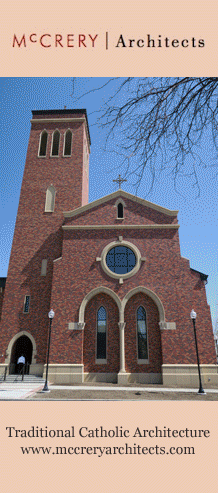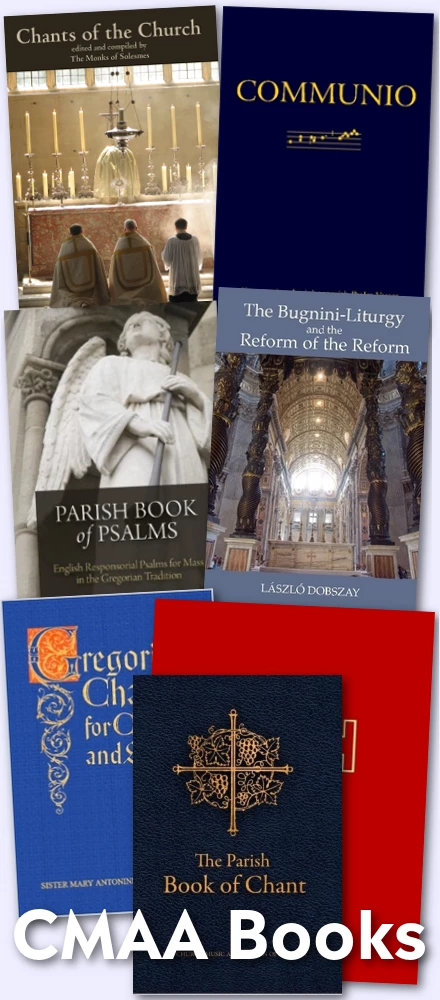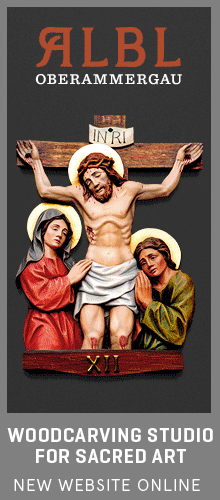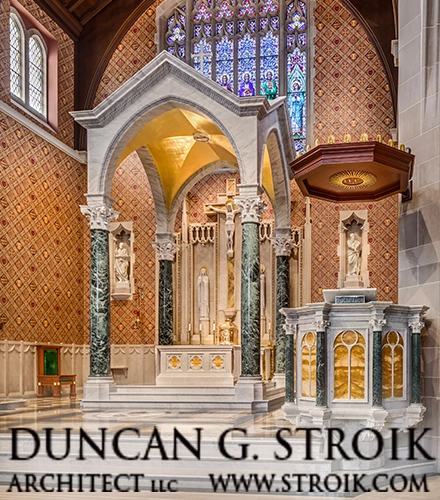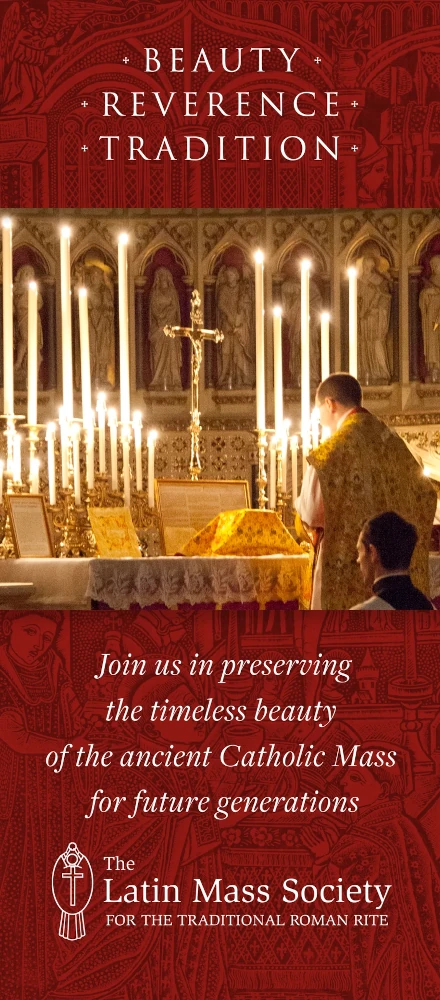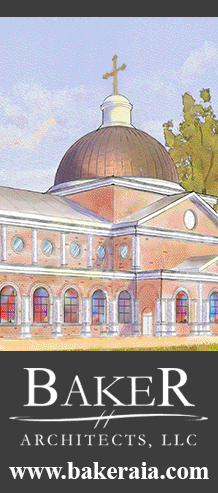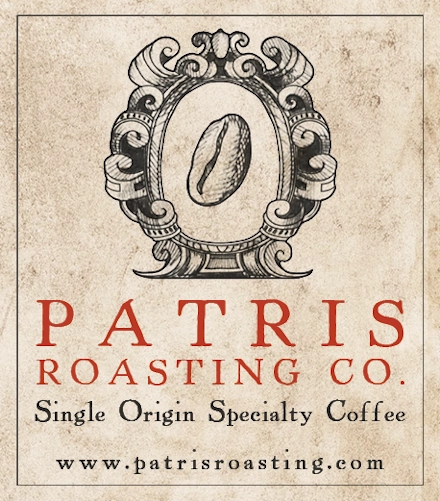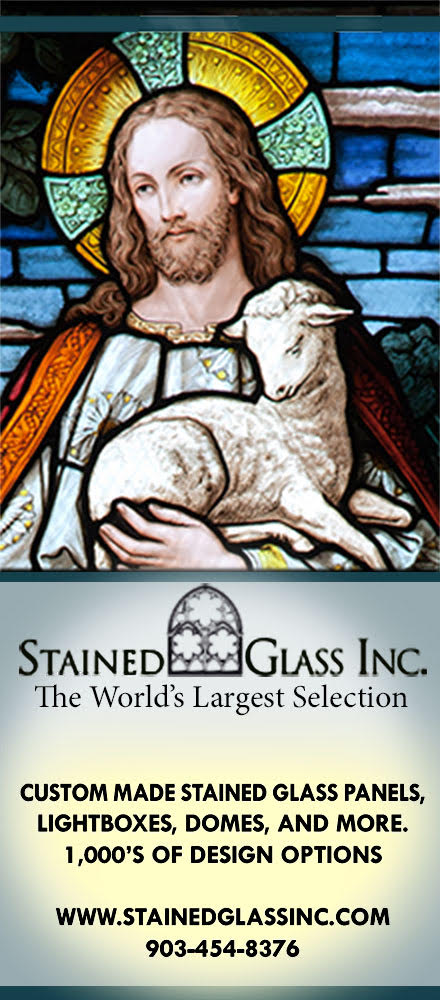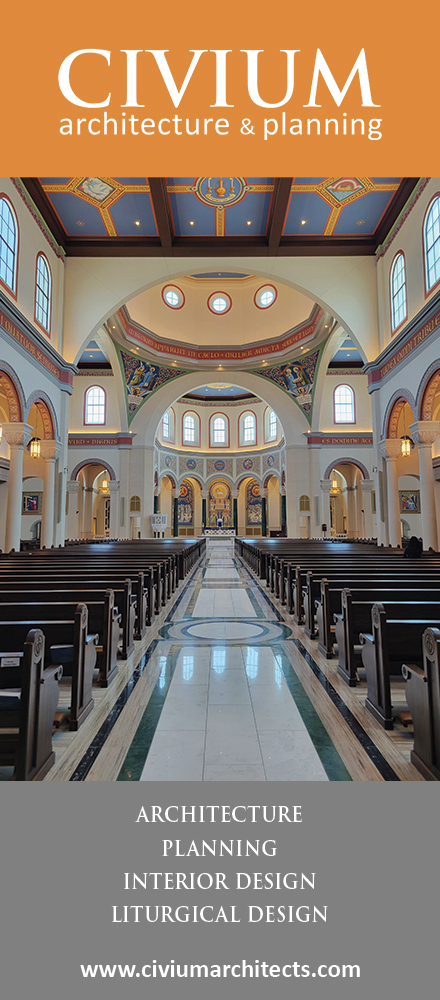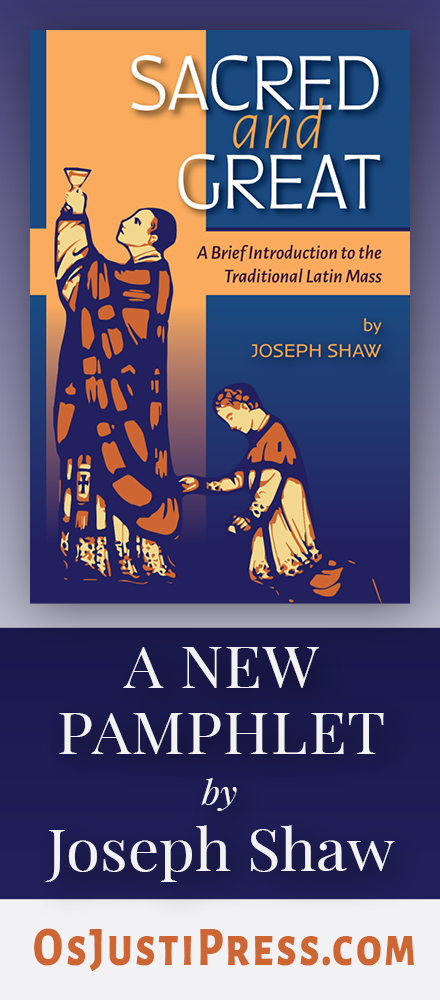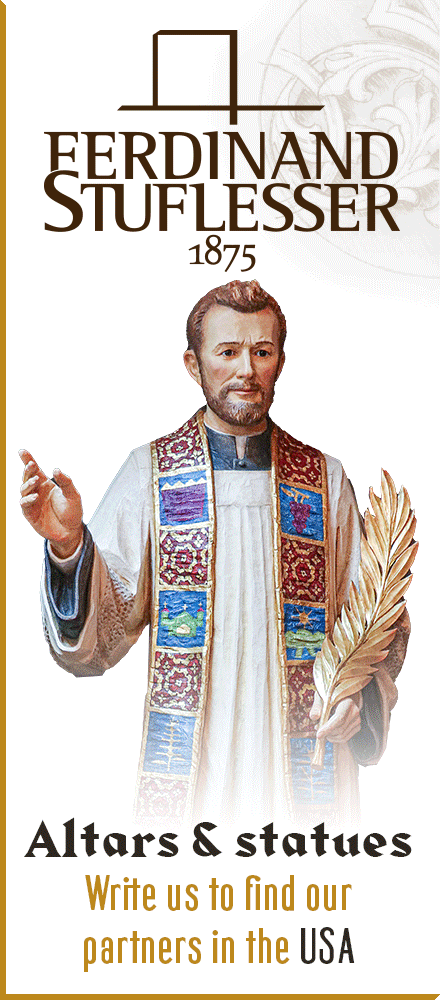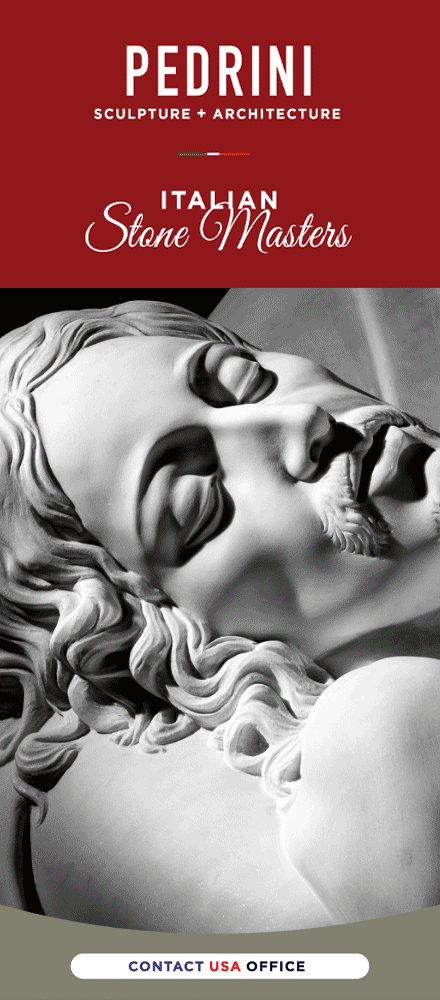One of the most ancient iconographic traditions in the depiction of Christ’s Nativity is the placement of an ox and an ass near the manger in which He was laid by His Mother. No such animals are mentioned in the Gospel, and yet they consistently appear in the scene from very early times; indeed, some early images of the Nativity show only the Christ Child in the manger, with the ox and the ass nearby, leaving out Mary, Joseph, the angels, the shepherds, the Magi, the star and even the stable. The presence of the two animals was evidently enough to indicate which event of the life of Christ was being depicted, leaving the viewer to supply the rest of the story for himself. (Such highly succinct and simplified images are typical of much early Christian art.)
 |
| The so-called Sarcophagus of Stilicho, in the Basilica of St. Ambrose in Milan. ca. 400 A.D. |
The first surviving source referring to them in connection with the birth of Christ is the thirteenth homily on the Gospel of St. Luke by Origen, who states that the manger in which Christ was laid “was that very one, which the prophet foretold, saying, ‘The ox knoweth his owner, and the ass his master’s manger.’ ” (Isaiah 1, 3. The word for master, ‘kyriou’, is also of course the word for ‘Lord’, here in the possessive case.) For Origen, the ox, a clean animal, symbolizes the people of Israel, while the unclean ass symbolizes the gentiles, who nevertheless know the manger of their Lord, while, as the prophet himself goes on to say in the same verse, “Israel hath not known me, and my people hath not understood.”
The same homily ends with the exhortation, “Having understood this manger, let us strive to know the Lord, and become worthy of the knowledge of Him, and to receive His birth, the resurrection of His flesh, and also His glorious return in majesty; to Him be glory and dominion unto all ages. Amen.” When speaking of the importance of knowing the Lord in His birth and His resurrection, Origen here touches upon the most crucial doctrine of the Christian faith in the ancient world: not the divinity of Christ, but the humanity of God.
This fundamental dogma of Christianity was a teaching entirely alien to the mind of the ancient world. The absolutely transcendent One of Plato could not take such interest in the welfare of the human race as to join it; and the impersonal Prime Mover of Aristotle could not become a Person. Hence the myriad Christological heresies in the early centuries of the Church, all of them variations on a single theme. Accepting the mindset of the age, which taught that the divine nature is alien and separate on all levels from the human, each heretic claimed that something must lack in some way from either the fullness of Christ’s divinity, or the fullness of His humanity. Origen, therefore, is indirectly refuting such heretics, particularly the Gnostics, who were widespread throughout the Church in his time, and particularly in Egypt, where he preached these homilies. The true knowledge of the Christian is for him knowing the reality of God’s birth, resurrection, and by inference suffering and death. To the mind of the heretics, all these corporeal realities are entirely incompatible with Divinity, and this “fact” is the basic tenet which the “Gnostics”, i.e.“Knowers”, claimed to know.
(pictured right: a rare image of ‘Master Origen’, from the church of St. Peter in Hamburg, Germany, 1383. Although Origen was branded a heretic by the Fifth Ecumenical Council, many of his works were approved by various authorities, most notably Cassiodorus, and widely read in the Divine Office in the West before the Tridentine Reform.)
(pictured right: a rare image of ‘Master Origen’, from the church of St. Peter in Hamburg, Germany, 1383. Although Origen was branded a heretic by the Fifth Ecumenical Council, many of his works were approved by various authorities, most notably Cassiodorus, and widely read in the Divine Office in the West before the Tridentine Reform.)
Prophetic confirmation of the belief that God became knowable in the Incarnation, and is thenceforth known to man, was found by the early Christians in the Greek version of the canticle of Habakkuk, a Biblical passage of the greatest importance to both theology and liturgy. The Septuagint translation of the opening verses is based on a variation of the Hebrew consonantal text, read with different vowels from those now found in the Hebrew Bible.
O Lord, I have heard Thy report, and was afraid: I considered Thy works, and was amazed: in the midst of two living beings Thou shalt be known; when the years draw nigh, Thou shalt be acknowledged; when the time is come, Thou shalt be manifested; when my soul is troubled, in wrath Thou wilt remember mercy. (chapter 3, 1-2)
This passage has been understood by the Fathers of the Church to refer to various manifestations of the Lord, and is certainly the reason this canticle is used in almost every historical Christian liturgy. Tertullian understood “the two living beings” to be Moses and Elijah appearing alongside the Lord at the Transfiguration (Against Marcion 4, 22); he was followed in this by St. Augustine in The City of God (18, 32), who also referred it to the two thieves crucified on either side of the Lord. The Roman Rite has followed this latter interpretation by singing these words as the first Tract of Good Friday. Origen, on the other hand, refers the prophecy to heavenly beings, rather than earthly ones. In his famous theological treatise On First Principles (frag. 8), he writes that the two Seraphim who appear before the Lord in Isaiah 6, and the two living beings in the canticle of Habakkuk “should be referred to Christ and the Holy Spirit.”
St. Methodius of Olympus quotes the same two passages of Scripture together, in the fourth chapter of his beautiful work The Oration on Simeon and Anna, and explains the latter thus:
(Habakkuk) speaks of knowledge, recognition, showing forth. As to the first of these: “In the midst of two living beings Thou shall be known,” he refers to that overshadowing of the divine glory which in the time of the Law rested in the Holy of holies upon the covering of the ark, between the cherubim, as He says to Moses, “There will I be known to Thee.” (Exodus 25, 22) … But when He says, “As the years draw near, you shall be recognized,” He means, as has been said before, that glorious recognition of our Savior, God in the flesh, who is otherwise invisible to mortal eye; as somewhere Paul, that great interpreter of sacred mysteries, says: “But when the fullness of the time had come, God sent forth His Son, made of a woman, made under the law, to redeem them that were under the law, that we might receive the adoption of sons.” (Galatians 4, 4-5)
St. Methodius was a fierce opponent of the theology of Origen, against whom he explains the “two living beings” as angels, rather than the Son and the Spirit. More significantly, he is the first to associate the words of Habakkuk directly with the Incarnation. (In the controversies of the early sixth century that lead to the Second Ecumenical Council of Constantinople, Origen’s explanation was the object of a more direct attack by the Emperor Justinian, among others.) This prophecy of Habakkuk is thus established by the Fathers as a prophecy of God’s self-manifestation in various ways, including the Incarnation, which is revealed to man by the birth of the Savior.
Ancient Christian and Jewish interpreters of the Bible accepted without question that nothing in it was written by chance, and that everything in it carried several different meanings. (On this, see the magisterial work of Prof. James Kugel, The Bible As It Was, Harvard, 1999.) The Greek word for “living beings”, “zōōn”, and its Latin translation “animalium”, can also be understood as “animals” in the modern English sense. Origen had connected the manger of the Nativity with Isaiah 1, where manger and master (or Lord) are known by two animals. Habakkuk's words can be read to say that the Lord is known “in the midst of two living beings” or “animals”. The last step in interpretation was that the two animals should be identified specifically as an ox and ass, according to the words of Isaiah.
Ancient Christian and Jewish interpreters of the Bible accepted without question that nothing in it was written by chance, and that everything in it carried several different meanings. (On this, see the magisterial work of Prof. James Kugel, The Bible As It Was, Harvard, 1999.) The Greek word for “living beings”, “zōōn”, and its Latin translation “animalium”, can also be understood as “animals” in the modern English sense. Origen had connected the manger of the Nativity with Isaiah 1, where manger and master (or Lord) are known by two animals. Habakkuk's words can be read to say that the Lord is known “in the midst of two living beings” or “animals”. The last step in interpretation was that the two animals should be identified specifically as an ox and ass, according to the words of Isaiah.
In the early seventh century, there appeared an apocryphal Infancy Gospel, attributed to St. Matthew, formally titled On the Origin of the Blessed Mary and the Childhood of the Savior. The unknown writer borrowed much of his material from earlier apocryphal works, among them, the very ancient Protoevangelium of James; many of the traditional stories first attested in his work are in fact much older, and it must not be assumed that he was the first to explicitly associate the prophecies of Isaiah and Habakkuk with the events surrounding the birth of Christ, as follows.
And on the third day after the birth of our Lord Jesus Christ, the most blessed Mary went forth out of the cave, and entering a stable, placed the child in the stall, and the ox and the ass adored Him. Then was fulfilled that which was said by Isaiah the prophet, saying: ‘The ox knoweth his owner, and the ass his master’s crib.’ The very animals, therefore, the ox and the ass, having Him in their midst, incessantly adored Him. Then was fulfilled that which was said by Habakkuk the prophet, saying: “Between two animals Thou art made manifest.” (chapter 14)
 |
| The ivory back cover of the Lorsch Gospel Book, ca. 800, now kept in the Victoria and Albert Museum in London; at the bottom, the Birth of Christ, with St. Joseph, the Virgin Mary, the two animals, and the appearance of the Angel to the shepherds. |
In the same vein, the following responsory is sung on the Octave of Christmas, the feast of the Circumcision.
R. Blessed and venerable art thou, o Virgin Mary, who without touch of shame, wast found as the Mother of the Savior: * He laid in the manger, and shone forth in Heaven.
V. O Lord, I have heard Thy report, and was afraid: I considered Thy works, and grew fearful: in the midst of two animals Thou shalt be known.
This theme of Christmas as the revelation of God’s salvation is also expressed in the liturgy by the frequent repetition, in both the Mass and the Divine Office, of the second verse of Psalm 97, “The Lord hath made known his salvation: he hath revealed his justice in the sight of the gentiles”. They are sung in the Gradual of the third and most solemn of the Masses of Christmas; “His right hand hath wrought for him salvation, and his arm is holy. The Lord hath made known etc.” In ancient times, when introits were sung with several versicles, they would also have been sung at the beginning of the Mass; there now remains only the first verse of the Psalm, “Sing ye to the Lord a new canticle, because he hath done wonderful things”. All of these texts are repeated at the Masses of the days within the octave of Christmas and on the Circumcision. The same psalm is sung at Matins of Christmas with the antiphon “The Lord hath made known, alleluja, His salvation, alleluja.”; these words are then also used as the versicle of both Lauds and Vespers throughout the octave.
The association of these words with the Incarnation may be found already towards the end of the second century in the writings of St. Irenaeus, the contemporary of Tertullian and the first to denounce the Gnostic heresy.
The knowledge of salvation (spoken of by Zacharias in the Benedictus) was the knowledge of the Son of God, who is both called and actually is, salvation, and Savior, and salutary. … as bringing salvation, thus: “God has made known His salvation in the sight of the gentiles.” For He is indeed Savior, as being the Son and Word of God. (Against Heresies 3.10.2 in fine)
More than one modern writer has failed to grasp or acknowledge the pastoral concerns of men like St. Irenaeus, Origen, or the fathers of the Council of Nicea, when they assailed heresies like Gnosticism or Arianism. In defending the full humanity and the full divinity of Christ, they are also defending the fullness of God’s salvation for the sake of every single person alive, of whatever sort or condition. For the heretics, human nature cannot be saved by the divine nature, because the latter can have nothing in common with it. The faith of the Church can look upon a newborn in a manger and proclaim to all men that in Him, God has made known His Salvation, which is Himself.




